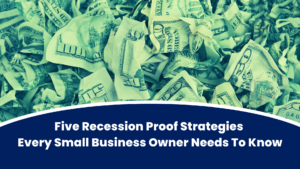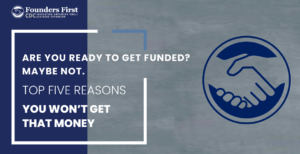By Kim Folsom
This is Part 1 of a two-part article on veterans and entrepreneurship. This time we take a look at the state of entrepreneurialism for veterans in the U.S. and discuss some of the problems with financing. Next time we’ll cover networking, mentorship, and more.
Helping veteran entrepreneurs succeed is personal for me. I was a military brat — my dad served 22 years in the Navy before launching his own business career. Seeing him and other veterans in action, I learned that military professionals are trained to lead. The military does a great job instilling best practices that veterans are able to leverage to grow successful ventures. Veterans have training and expertise to help any business succeed, and many are self-starters with a desire to build and manage their own businesses.
The CARES Act classifies 9% of U.S. businesses as veteran-owned — that’s 2.5 million businesses that employ 5.79 million people. The top six industries for veteran-owned businesses are: Finance and Insurance (13.2%), Transportation and Warehousing (12.7%), Mining, Quarrying, Oil and Gas (12.4%), Construction (11.1%), Professional, Scientific, and Technical Services (10.9%), and Manufacturing (10.5%).
Our veterans display a wide range of skills, interests, and business prowess across the U.S., which is fantastic. The news isn’t all good, however. Today veteran entrepreneurship has been on the decline. It’s worth taking a look at what’s behind that, and what we can do to help our veterans continue to be a vital part of our economy.
There’s a long tradition of veterans starting their own businesses. According to the Institute for Veterans and Military Families, 49.7% of World War II veterans and 40% of Korean War veterans started their own businesses. However, a joint report by the New York Federal Reserve Bank and the SBA shows that the number of self-employed veterans has dropped 33% since 1998.
Part of the reason for that is because WWII, Korean War, and Vietnam veterans have aged out of the workforce. However, today only 5% of veterans aged 25–45 become entrepreneurs. There are major corporate initiatives that employ veterans, so that’s a good thing. But it doesn’t tell the whole story.
According to the New York Fed report, 75% of veteran entrepreneurs reported difficulty starting and growing a business. A Syracuse University white paper entitled, “Bridging the Gap: Motivations, Challenges, and Successes of Veteran Entrepreneurs, outlines the three top challenges:
- Access to capital
- Limited or no networks
- Lack of mentors
Those stacked up with the issues our panel of veterans faced in a recent webinar I moderated here at Founders First CDC called “Secrets, Lies, and Success Tips for Leveraging Military Service to Grow Your Business.” We discussed everything from bootstrapping your business to how to express your emotions in the business world — something that was not an option in the military. It’s worth listening to!
Access to capital
Access to capital definitely appears to be the number one problem. From not knowing what is available to onerous application processes to not enough money to go around — veterans are continually flummoxed as they try to get funding for businesses. In fact, only 9.8% of veteran small businesses start with funding from banks or commercial lenders; 61.7% start with the veterans’ own personal or family savings. And later, when they are trying to expand, veterans use personal and business credit cards far too often to get the money they need to fuel their businesses.
“Everything takes three times as long and costs four times as much,” said Jenny DuFresne, Founder and CEO of DuFresne Solutions Group, during our panel. “You have to be crafty with your finances if you’re bootstrapping. Tighten your belt. Sacrifice some things. Have a healthy rainy day fund.”
The SBA does have several financial assistance programs that are geared toward veterans. The application process isn’t necessarily a marathon either. You may need to draft a business plan — but you should be doing that anyway. And statistics seem to indicate that veterans aren’t taking full advantage of SBA programs. From 2010 to 2017, SBA loans to non-veteran-owned businesses increased 82% while SBA loans to veterans only increased 48%, even with relief programs set aside for veterans.
Funding does not solve all your business problems — far from it. You need the business wherewithal to manage it. “In the military, I never worried about making payroll for the marines in my unit,” Mark Sanders, Principle of R3 Strategic Support Group, said during our webinar. “I have a lot of sleepless nights over payroll now. You have to understand the basics and manage payroll.”
Budgeting is particularly challenging when your business is in government contracting and there might be a long time frame until you get paid, Sanders noted. If you’re fortunate enough to be retired, you can leverage your pension and try to self-finance. If not, you’ll need to find the money somewhere — and then you have to be smart how you use it.
Networking, accelerators, and mentors can help veterans avoid mistakes and excel at their business. We’re going to cover all of those things in Part 2 of this article.
In the meantime, if you’re a veteran looking for funding and other resources, Small Business Trends put together a list of resources last year that will be helpful to review.
And I would be remiss if I didn’t point out that Founders First CDC is the largest revenue-based direct funder of diverse-led small businesses. We have $100 million in committed capital and we love working with veterans. Like I said, I was a military brat.
Kim Folsom is the founder and CEO of Founders First Capital Partners, which has helped accelerate the success of hundreds of small, service-based, business-to-business companies since 2015




